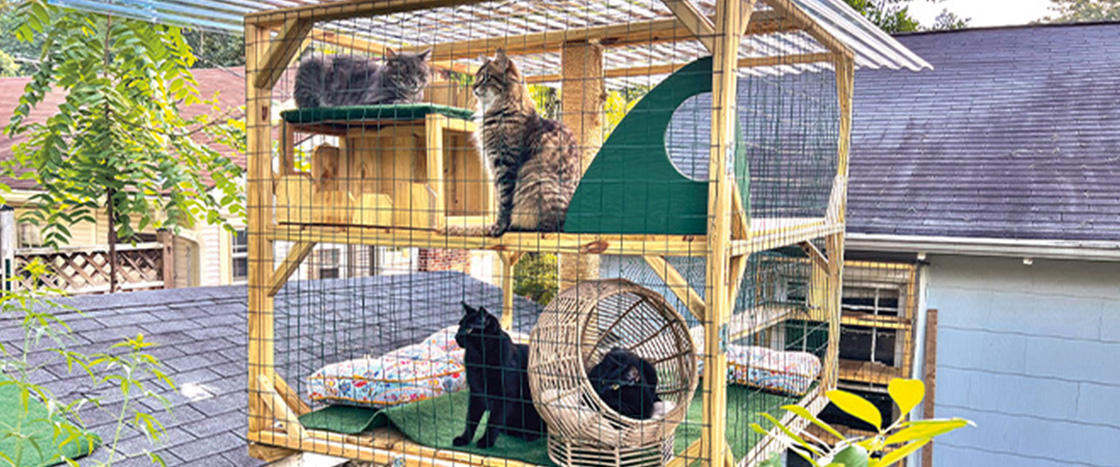Photographer Kimberly Hubbard lives in a small house in Chattanooga, Tennessee. Until last year, her four cats—Levi, Jasper, Beau, and Rocky—spent all their time indoors. Hubbard wanted to give the cats more space to explore and enjoy some fresh air. But she also didn’t want the cats to harm the birds and other wild animals that visit her backyard.
Then Hubbard found the perfect solution. Her brother Jamey helped her design and build a “catio.” This is an enclosed, outdoor patio made just for cats! These cat-friendly spaces are becoming popular among cat owners.
Photographer Kimberly Hubbard lives in a small house in Chattanooga, Tennessee. She has four cats. Their names are Levi, Jasper, Beau, and Rocky. Until last year, Hubbard’s cats spent all their time indoors. Hubbard wanted to give the cats more space to explore and enjoy some fresh air. But she didn’t want the cats to harm the birds and other wild animals that visit her backyard.
Then Hubbard found the perfect solution. Her brother Jamey helped her design and build a “catio.” A catio is an enclosed, outdoor patio made just for cats! These cat-friendly spaces are becoming popular among cat owners.

